Troubleshooting for green and cloudy water
Introduction: Understanding Green and Cloudy Water Issues
Aquarium water problems, particularly cloudy aquarium water, are common among aquarium enthusiasts. This can be frustrating, as clear water is essential for the health of fish, plants, and the overall beauty of the tank. Cloudy water often indicates an imbalance in the tank’s ecosystem and can be caused by various factors such as poor filtration, overfeeding, or algae growth. The presence of cloudiness can also affect the clarity of the water, making it difficult for fish to thrive.
Understanding why is my aquarium water cloudy is the first step in troubleshooting this issue. By identifying the cause, you can take the appropriate steps to resolve it. Whether the cloudiness is caused by bacteria, excess nutrients, or algae, each problem has a unique solution that helps restore balance and keep the water clear and healthy for aquatic life.
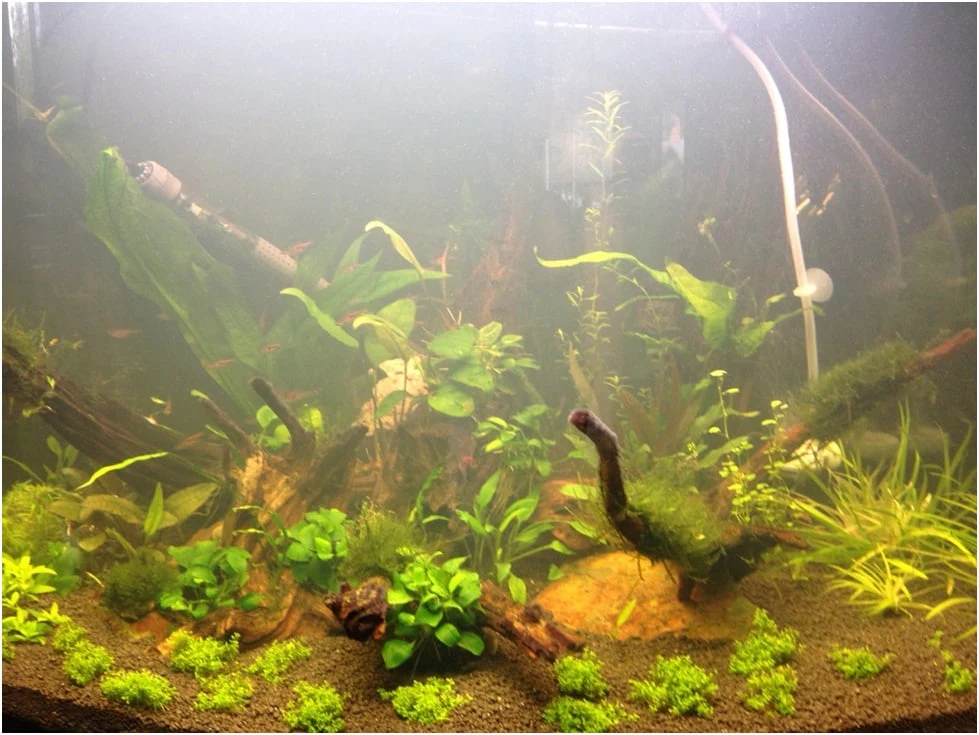
What Causes Green Water in Aquariums?
Cloudy tank water can often be caused by algae blooms, which turn the water green. Algae thrive in aquariums when there is an excess of light or nutrients like nitrates and phosphates, creating the perfect conditions for rapid growth. These algae particles float in the water, causing a greenish tint that can obscure visibility and hinder the health of your plants and fish. Proper tank maintenance and management can help prevent these outbreaks.
To understand green aquarium water, it is essential to look at the conditions that promote algae growth. High lighting, unclean filters, or overfeeding can all lead to an imbalance in the tank's environment. While green water is often considered unsightly, it is usually a sign of an underlying issue that can be addressed with proper care and attention.
How to Clear Green Aquarium Water?
If you're wondering how to clear green aquarium water, the answer lies in controlling the algae causing the issue. The most effective method to address green water is by reducing the nutrients that feed algae, such as nitrogen and phosphates. Regular water changes, better filtration, and limiting lighting exposure can significantly help clear the water. You may also want to consider using algae-eating fish or specialized treatments to remove excess algae.
Sometimes, simply adjusting the aquarium green water conditions, such as reducing light exposure to 8-10 hours per day or using an algae filter, can resolve the problem. Adding plants to your tank can also help by competing with algae for nutrients. Over time, with the right maintenance, the green tint will diminish, and your aquarium will return to its clear and healthy state.
Identifying the Type of Cloudy Water
Cloudy aquarium water can be the result of different factors, such as bacterial blooms, organic matter buildup, or algae overgrowth. A bacterial bloom occurs when there’s a sudden surge of bacteria in the water, often due to excess nutrients, uneaten food, or decaying plant matter. These bacteria can cloud the water temporarily, but with proper filtration and water changes, the problem will resolve itself.
To properly identify why is my aquarium water cloudy, it’s essential to test the water for ammonia, nitrites, and nitrates. These tests will help determine whether the cloudiness is due to bacterial growth or other factors like algae. Once the cause is determined, you can then take the necessary steps to eliminate the cloudiness and restore the clarity of your tank water.
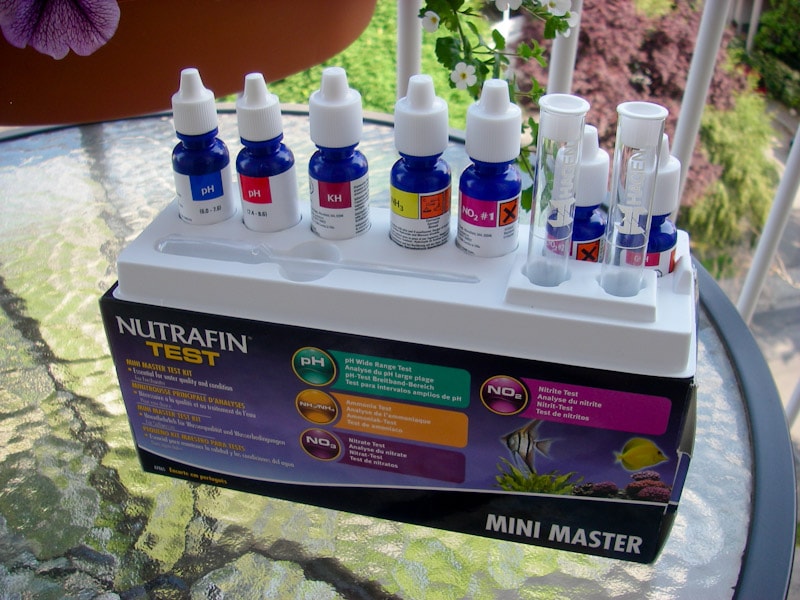
CO2 Injections: How They Impact Aquarium Water Quality
In an aquarium, CO2 injections are a crucial part of maintaining healthy live plants. By providing plants with a readily available source of carbon, they can photosynthesise efficiently, which helps them grow stronger and reduce excess nutrients that contribute to algae growth. A properly CO2-enriched environment can also help maintain balance in the water column, preventing green water caused by algae bloom. CO2 is a critical factor in managing green cloudy water as it supports the beneficial bacteria responsible for keeping algae in check.
However, an overabundance of CO2 in the tank can sometimes lead to excess green water, especially if the aquarium light is too intense. An increase in light combined with CO2 injections can fuel algae growth. It's essential to monitor CO2 levels carefully to avoid exacerbating issues with green cloudy water and to ensure that your fish tank stays balanced and healthy. Regular testing and adjustments can ensure that your plants thrive while preventing any negative effects on the overall water quality.
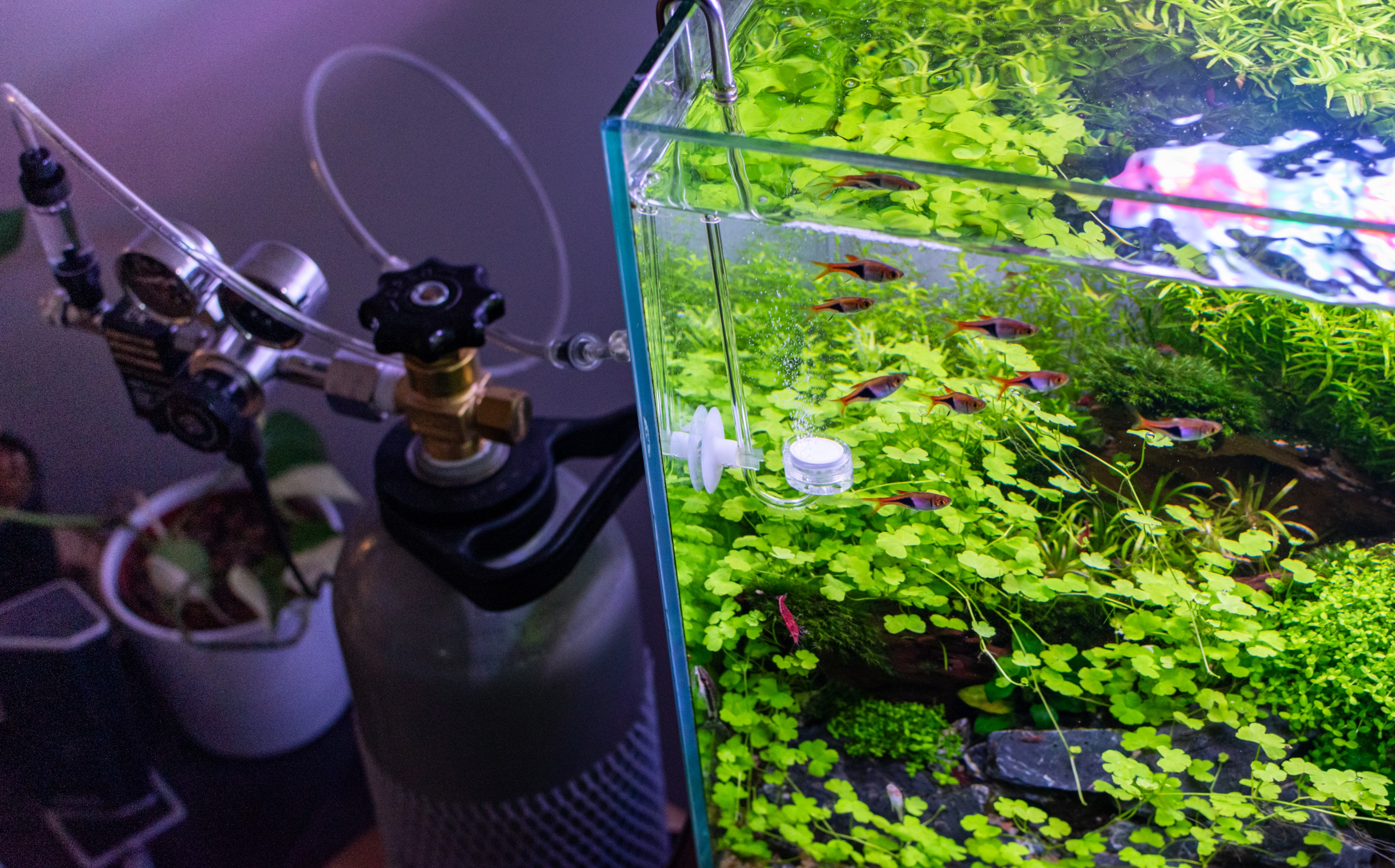
Algae Control: Prevention and Removal
Algae growth is a common problem that can lead to cloudy water and reduced water quality in your aquarium. An algae bloom can rapidly turn green water into a nuisance, often causing fish and plants to suffer. The key to algae control lies in managing excess nutrients in the water, such as nitrates and phosphates, which act as food sources for algae. Properly maintaining your filter pad and ensuring your filtration system works efficiently can help manage these nutrient levels.
A fish tank that is stocked with too many fish can increase fish waste, which in turn provides an abundant food source for algae. Overfeeding can also contribute to an increase in fish waste and uneaten food, leading to higher levels of organic matter. If you notice green water, it’s essential to reduce the amount of light your tank receives, as excessive light can contribute to an algae bloom. Utilising a UV steriliser can also help by killing suspended algae in the water column, clearing the green cloudy water and promoting a healthier, cleaner tank environment.
Water Filtration: The Key to Clear Aquarium Water
Proper filtration is essential in maintaining clear water and preventing issues like green water. A good filter removes excess nutrients, such as fish waste, and helps prevent the growth of suspended algae. Effective biological filtration promotes the growth of beneficial bacteria that break down harmful compounds in the tank. By encouraging the establishment of good bacteria, you can reduce the likelihood of algae bloom and maintain a balanced ecosystem in your fish tank.
In addition to biological filtration, mechanical filtration through filter pads helps remove physical debris from the water. It's important to replace or clean the filter pads regularly to ensure they work efficiently and avoid an overload of waste in the tank. Regular maintenance of your filtration system, along with maintaining proper water columncirculation, ensures that your tank stays clean and prevents cloudy water or green water from becoming a recurring problem.
Lighting: Managing Aquarium Light for Optimal Health
The intensity and duration of your aquarium light play a significant role in the overall health of your aquarium. While plants require light for photosynthesis, too much exposure can encourage algae growth and lead to green cloudy water. To prevent algae bloom, limit the lighting to 8–10 hours a day and consider using a timer to maintain a consistent cycle. Reducing light exposure can also help in managing green water, as excessive light increases the likelihood of algae taking over.
Choosing the right type of light is also crucial in maintaining a balanced environment. Live plants benefit from high-quality light that mimics natural sunlight, but overlighting can lead to algae bloom. A good balance between lighting and water quality will help plants flourish without encouraging excessive algae growth. Keeping the lighting at an appropriate level helps prevent any negative impact on the fish tank while ensuring your plants and fish thrive.
The Role of Water Changes in Clear Water
Regular water changes are crucial for maintaining the clarity and health of your aquarium water. In an aquarium with green water, performing large water changes can help remove excess nutrients, such as nitrates and phosphates, that fuel algae bloom. Fish waste, uneaten food, and decaying organic matter are common sources of these nutrients. By regularly changing the water, you dilute these compounds and promote a healthier environment for both your fish and plants.
In addition to removing waste, water changes improve water quality by replenishing essential minerals and maintaining proper pH levels. It’s important to ensure that your tap water is properly conditioned and matches the water parameters of the tank to avoid stressing your fish. By incorporating consistent water changes into your routine, you can effectively manage green cloudy water and promote better growth for live plants while reducing the risk of recurring algae growth.
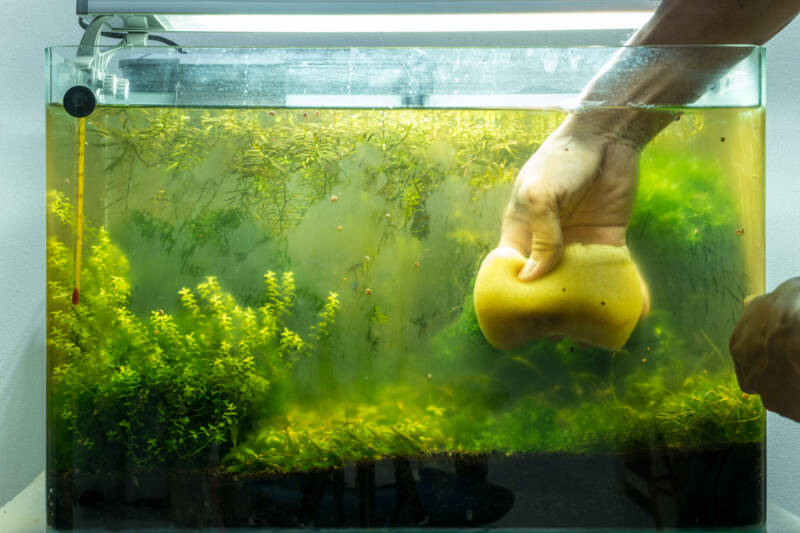
Water Testing: Monitoring Key Parameters for Clear Water
To prevent issues like green water and cloudy water, it's essential to monitor and maintain the right water parameters. Regular testing of ammonia, nitrate, phosphates, and pH levels ensures that your aquarium stays within the ideal range for fish and plants. When there's an imbalance, it can lead to nutrient overload, contributing to algae growth and suspended algae in the water. For example, high levels of ammonia or nitrate can lead to nutrient-rich conditions that support algae bloom.
Water testing also helps you track the progress of the nitrogen cycle, which is vital for breaking down toxic waste like fish waste. Ensuring that beneficial bacteria are thriving in your tank can prevent a buildup of harmful substances and keep green aquarium water from becoming a persistent issue. Regular tests help you adjust your maintenance schedule, and they also allow you to take immediate action if your water quality begins to deteriorate.
Controlling Fish Population to Maintain Healthy Water
One of the most common causes of green water and algae growth is overstocking the fish tank. When there are too many fish in a tank, they produce excessive fish waste, which increases nutrient levels and promotes algae bloom. The resulting increase in fish waste can lead to an imbalance in the water quality, causing high concentrations of nitrates and phosphates that feed algae. Proper fish stocking is essential to maintaining clear water and preventing the buildup of nutrients in the tank.
To maintain a balanced ecosystem, ensure that your fish tank is appropriately stocked for the size of the aquarium. Overcrowding can lead to poor water circulation, causing food and fish waste to accumulate in certain areas. Live plantscan help absorb excess nutrients, but they alone can't compensate for overstocking. By monitoring the fish population, you can reduce green water and create a healthier environment for both your fish and plants.
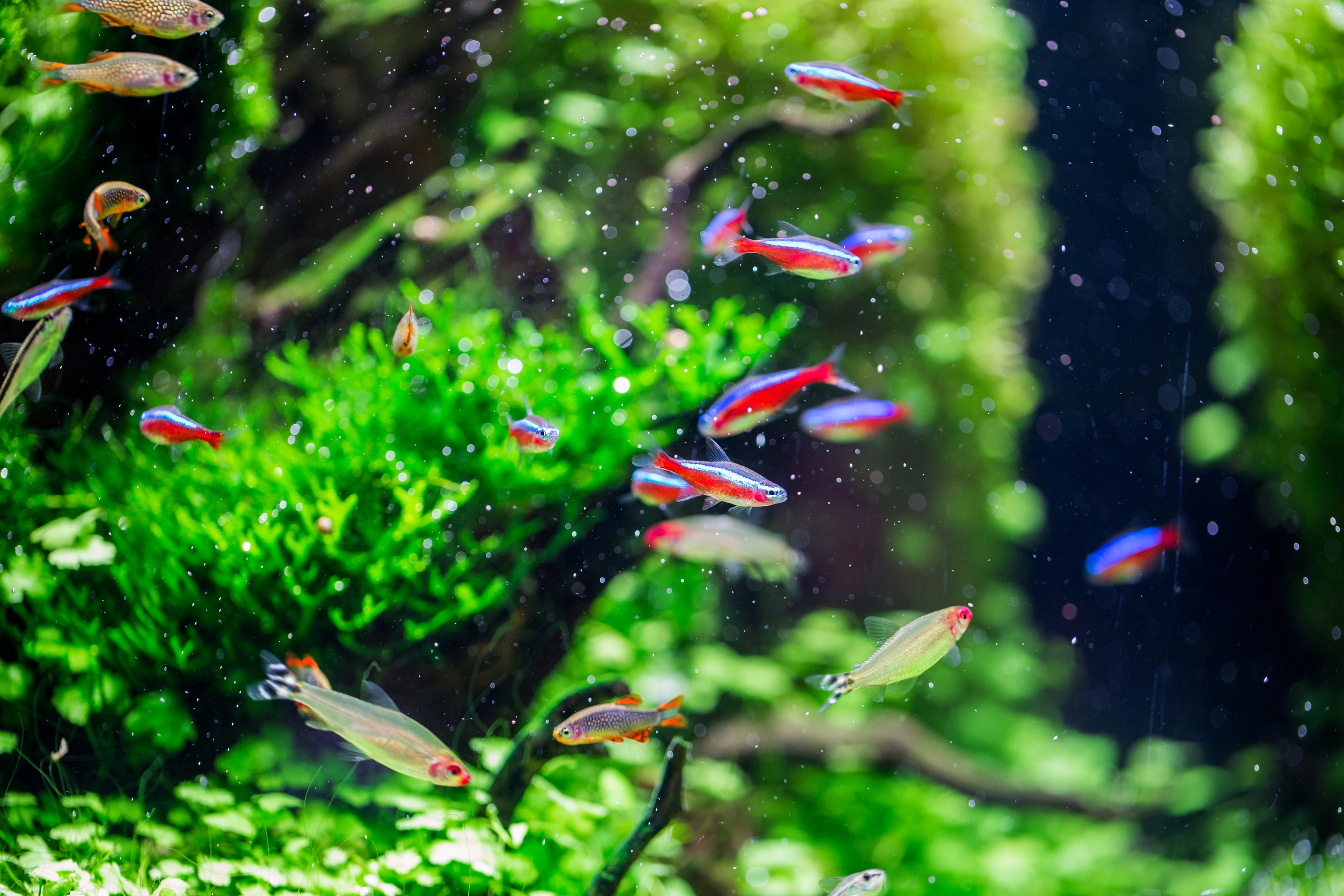
Using a UV Sterilizer to Clear Green Water
A UV steriliser is an effective tool for clearing green water caused by suspended algae. By passing water through a UV light, the steriliser destroys the cells of algae, bacteria, and other microorganisms, helping to clear up cloudy water and improve water quality. This process can significantly reduce the appearance of green cloudy water, offering a more permanent solution for algae-related issues in your aquarium. It’s particularly helpful in cases where algae bloomis widespread and other methods, such as water changes and reduced lighting, are not enough.
Although UV sterilisers are powerful tools, they should be used in combination with regular maintenance. Proper aquarium care includes maintaining balanced lighting, appropriate stocking levels, and efficient filtration. Using a UV steriliser as part of an overall strategy can greatly improve the health of your fish tank by preventing algae overgrowth and promoting the growth of beneficial bacteria, which is essential for the long-term health of both your plants and aquatic life.
Conclusion: Maintaining a Clear and Healthy Aquarium
In conclusion, managing green water and cloudy water in your aquarium requires a combination of good practices, including proper filtration, controlled lighting, regular water changes, and appropriate stocking levels. The presence of fish waste, algae bloom, and excessive nutrients can all contribute to poor water quality, but by addressing these issues promptly, you can restore balance to your tank. Regular testing of water parameters like ammonia, nitrate, and ph is key to maintaining a healthy aquarium environment.
By incorporating proper maintenance and using tools like a UV sterilizer or algae-eating fish, you can reduce green cloudy water and support the growth of healthy live plants. Creating a balanced tank with appropriate conditions will help you get rid of algae growth and keep your aquarium clear for the enjoyment of your aquatic life. With a proactive approach to tank management, you'll have a thriving aquarium free from the challenges of suspended algae and green water.




